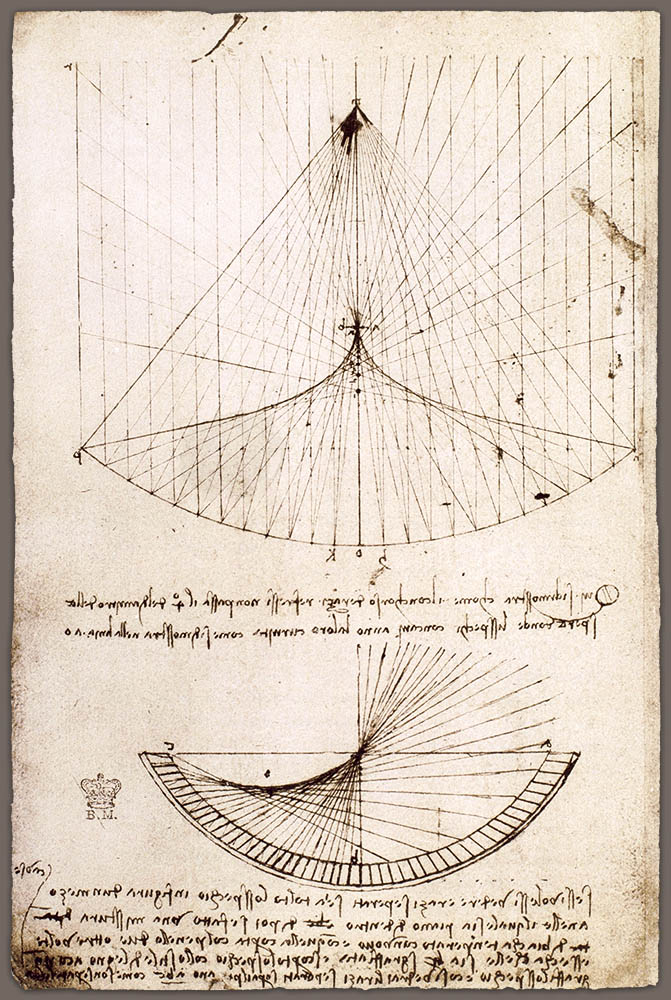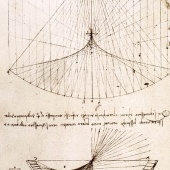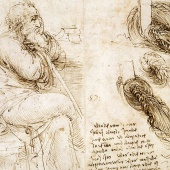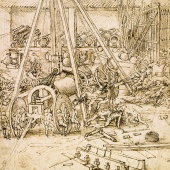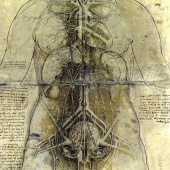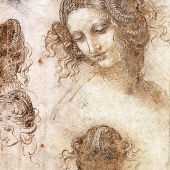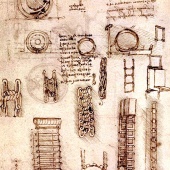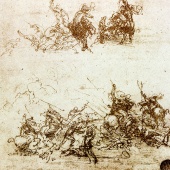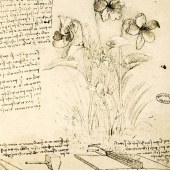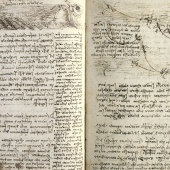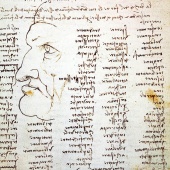Physics for a solar furnace

This image shows that a concentration of reflected rays does not exceed the quarter of the diameter of spheres where concave mirrors have their curves as shown on line 0.

To obtain separate rays, the half-ring mirror with a flat interior is removed and brushed twice or thrice with a mixture of white lead and egg. Once this mixture is dry, the mirror is uncovered using a wooden rod to prevent scratching with the separate rays visible on the plane a b c.
Codex Arundel, London, British Library
This compilation of around 283 sheets in varying formats was purchased in Spain around 1630 by the Lord Arundel, a leading English collector whose network of emissaries throughout Europe was tasked with purchasing antiquities and works of art. On his death, the manuscript was bequeathed to the Royal Society of London then to the British Museum. These sheets cover the period from 1480 to 1518 during which Leonardo da Vinci designed a palace in Romorantin for François I.
Approx. 21 x 28 cm, quill and ink on paper
Codex Arundel, f. 87 v, London, British Library.
How could solar energy be used to heat bathing installations or operate textile machines? Leonardo studied the geometry concerning the reflections of parallel rays on a curved metal plate. He concluded that there was a geometric relationship which is independent from the plate’s curve.
Each line on the curved plate represents a thin reflective surface which makes it possible to observe the distinct behaviour of each reflection.
